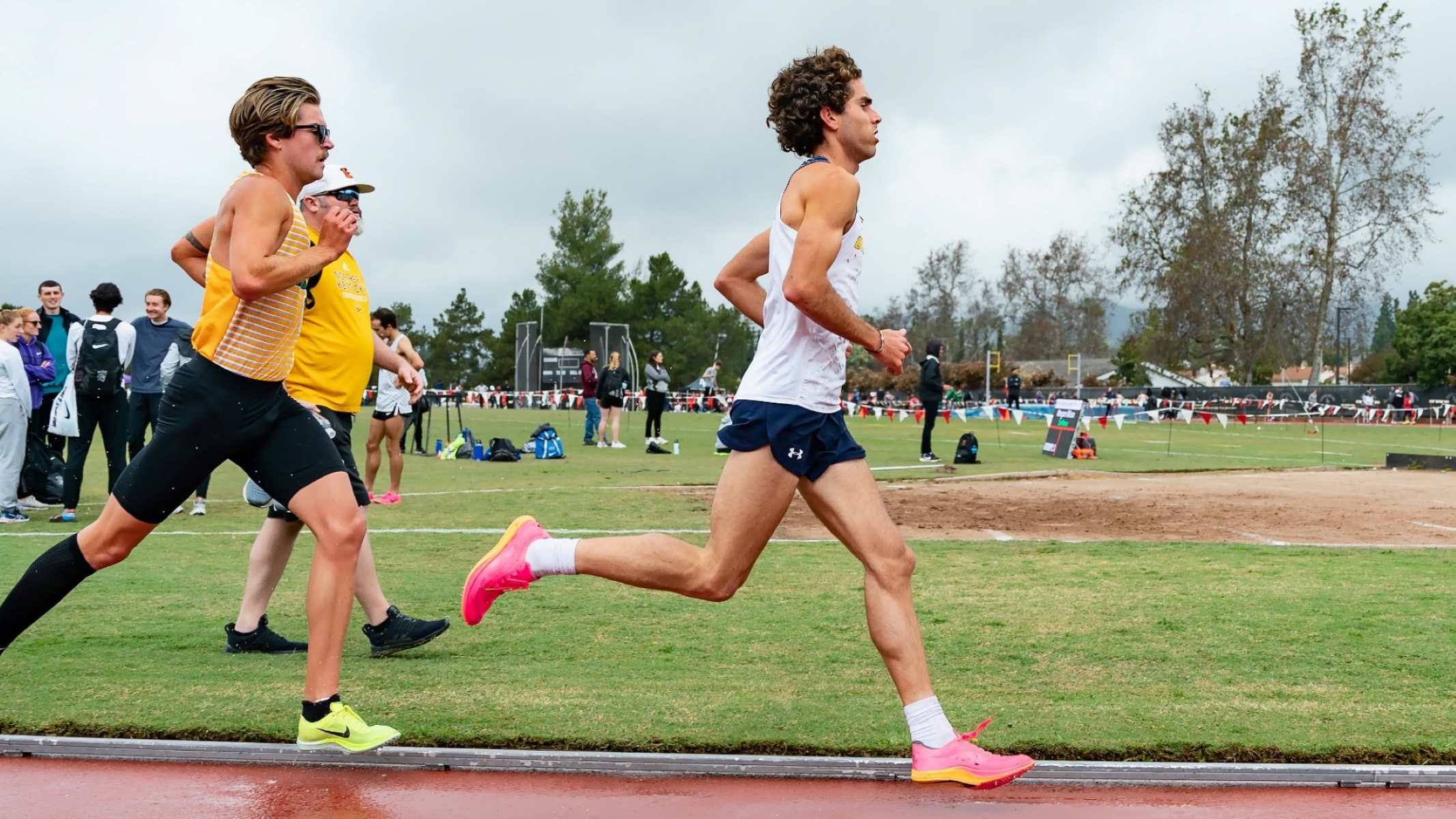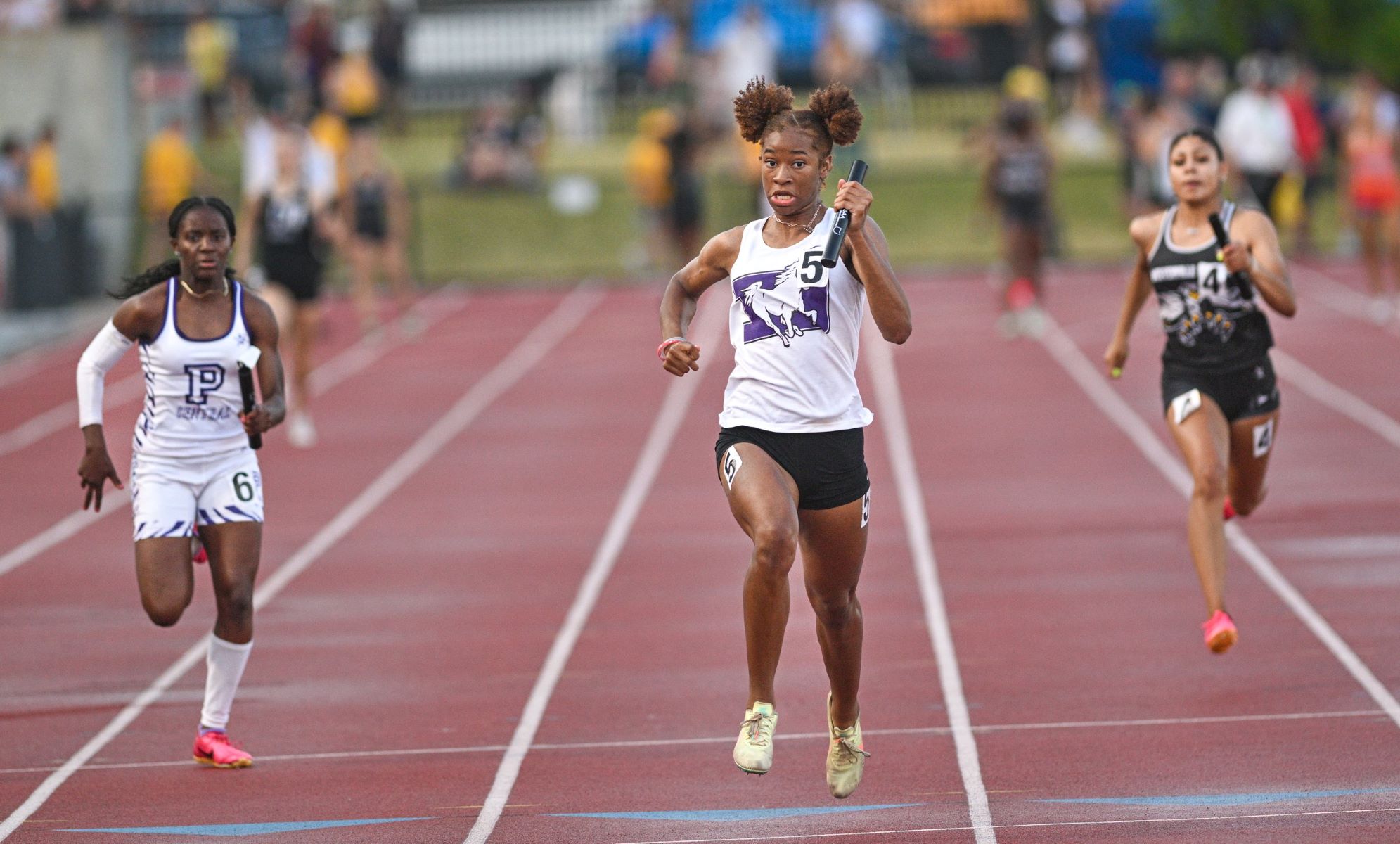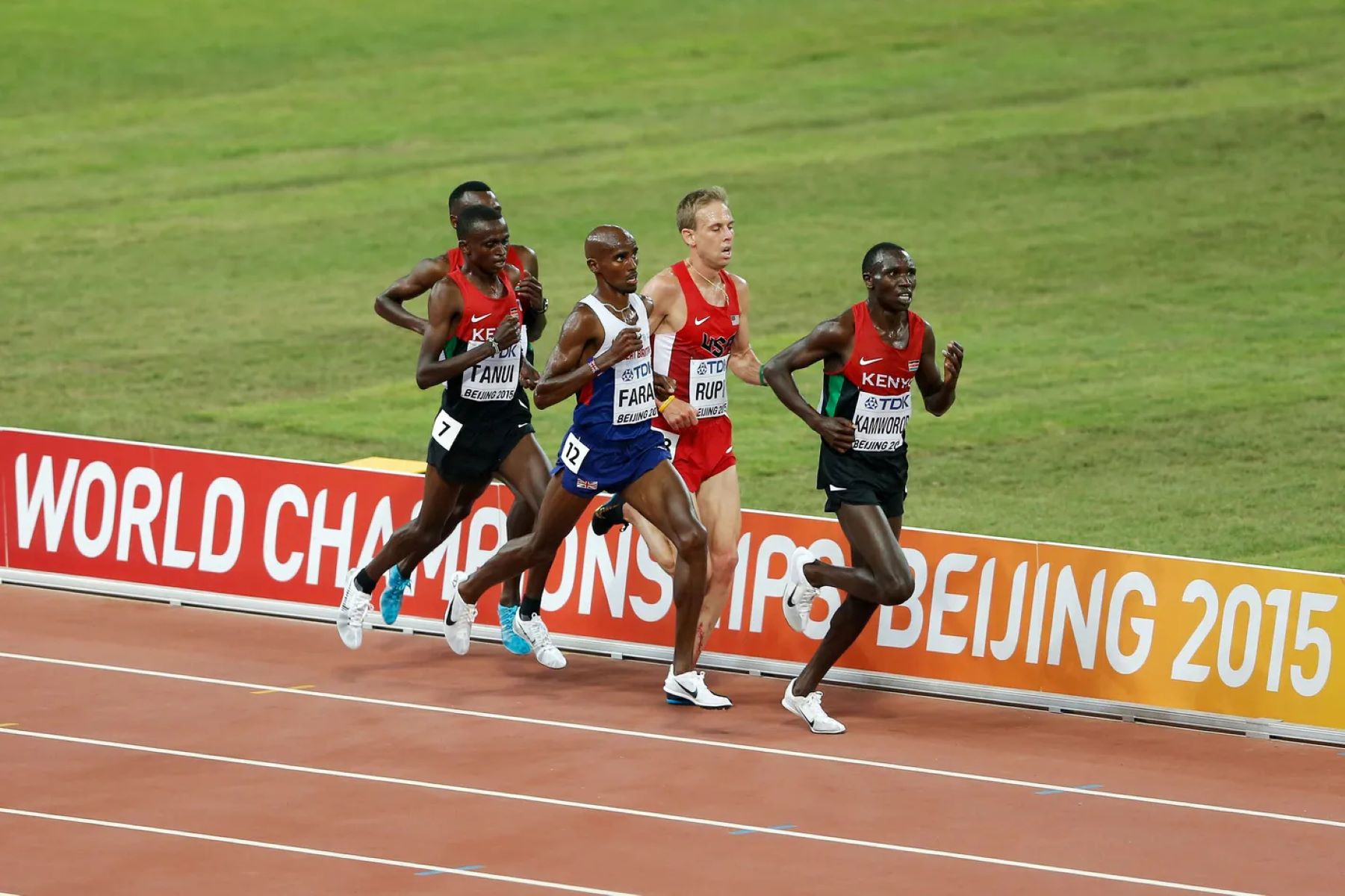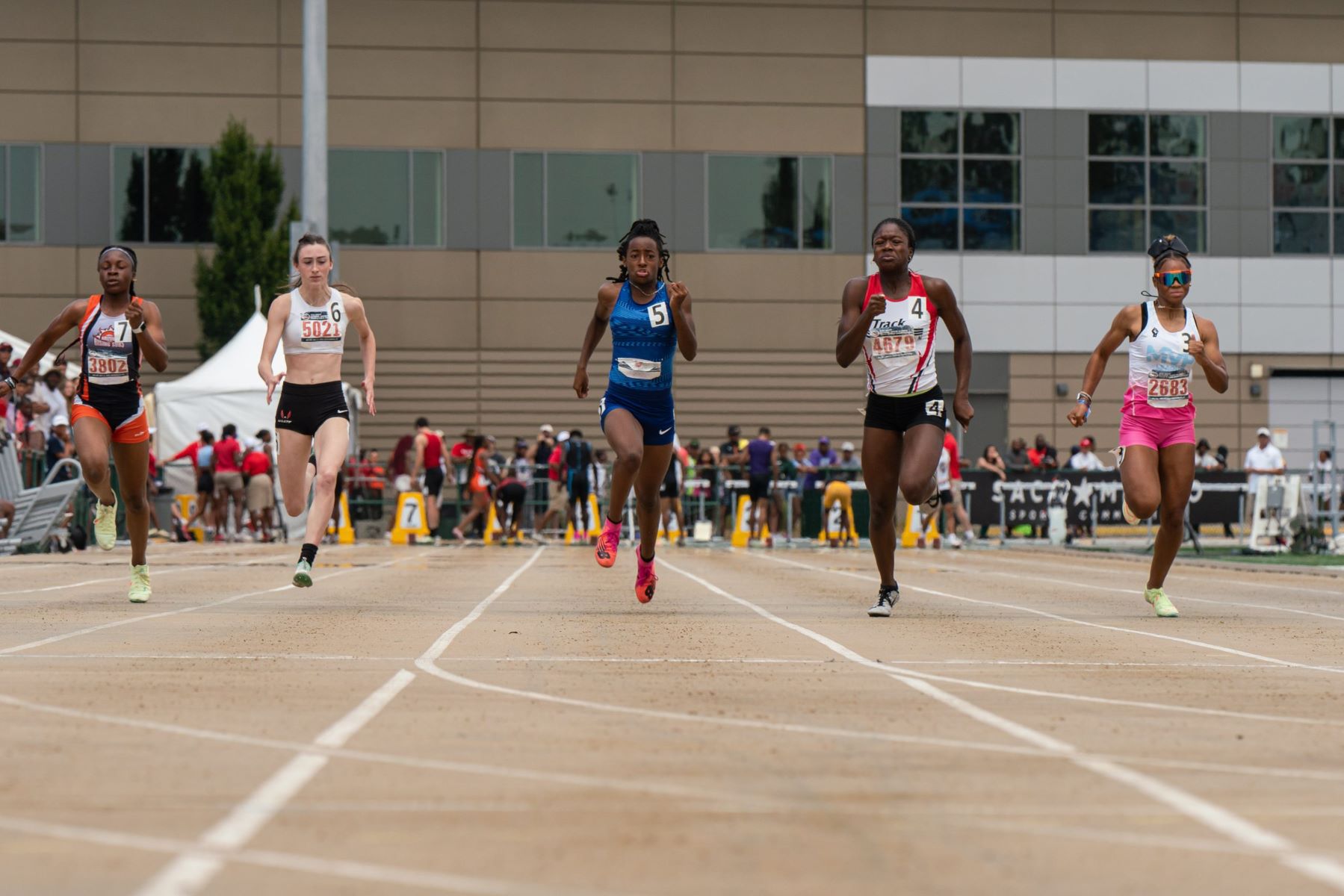Home>Misc>Featured>How Long Is Off-Season In Track And Field


Featured
How Long Is Off-Season In Track And Field
Modified: January 22, 2024
Discover the duration of the off-season in track and field. Get insights on how long athletes rest and prepare for the next season. Featured article.
Introduction
Welcome to the exciting world of track and field! Whether you’re a seasoned athlete or someone interested in the sport, it’s important to understand the concept of the off-season in track and field. The off-season is a crucial period that allows athletes to recover, rebuild, and prepare for the upcoming competitive season.
During the off-season, athletes take a break from intense competition and focus on other aspects of their training. It is a time for physical and mental rejuvenation, where athletes can address weaknesses, fine-tune skills, and improve overall performance.
The duration of the off-season varies depending on different factors, such as the level of competition and individual goals. While some athletes may have a relatively shorter off-season, others may have a longer period to rest and recuperate.
In this article, we will delve deeper into the off-season in track and field by exploring factors that affect its duration, the importance of the off-season, and strategies for training, injury prevention, nutrition, and mental preparation during this period.
So, whether you’re an athlete, coach, or simply curious about the inner workings of track and field, keep reading to discover how the off-season plays a crucial role in an athlete’s journey to success.
Understanding the Track and Field Off-Season
Before we dive into the specifics of the off-season in track and field, let’s first understand what it actually means. The off-season is a designated period in an athlete’s training cycle where they step back from competitive events and focus on rest, recovery, and preparing for the next season.
During the regular competitive season, athletes push themselves to the limit, pushing their bodies and minds to perform at their best. This consistent effort can take a toll on their physical and mental well-being. The off-season provides a much-needed break from the demands of competition, allowing athletes to recover both physically and mentally.
But don’t be mistaken, the off-season doesn’t mean lounging around and doing nothing. It is a strategic part of an athlete’s training plan that involves a different set of activities aimed at enhancing performance in the long run. It’s a time for focusing on weaknesses, building strength, and refining technique.
During the off-season, athletes often take a break from structured training and high-intensity workouts. They engage in cross-training activities like swimming, cycling, or yoga to maintain fitness and active recovery. This variety not only prevents overuse injuries but also provides a mental break from the monotony of their usual training routine.
Furthermore, athletes can use the off-season to address any imbalances or weaknesses that were identified during the previous season. They work on building strength, improving flexibility, and correcting technical flaws. This dedicated time allows athletes to make significant improvements in these areas without the pressures of upcoming competitions.
In summary, the track and field off-season is a crucial period in an athlete’s training cycle. It serves as a time for rest, recovery, and targeted training to address weaknesses and enhance performance. Understanding the purpose and significance of this period sets the foundation for utilizing it effectively to achieve long-term success.
Factors Affecting the Duration of the Off-Season
The duration of the off-season in track and field can vary depending on several factors. These factors play a significant role in determining how long athletes will have to rest and prepare for the next competitive season. Let’s explore some of the key factors that influence the duration of the off-season:
- Competition Level: The level of competition an athlete participates in can impact the length of their off-season. Elite athletes who compete at the international level may have a shorter off-season compared to athletes at the collegiate or recreational level. This is because elite athletes often have a demanding competition schedule and may need to start training for the next season sooner.
- Performance Goals: Athletes with specific performance goals may choose to have a shorter or longer off-season, depending on their individual needs. For example, an athlete aiming to break personal records or qualify for a major competition may opt for a shorter off-season to maximize their training time. On the other hand, athletes looking to recover from injuries or focus on long-term development may extend their off-season to ensure proper healing and progress.
- Training Load: The intensity and volume of an athlete’s training throughout the competitive season can influence the duration of the off-season. Athletes who engage in high-intensity training and compete frequently may require a longer off-season to allow their bodies to recover fully. Conversely, athletes who have a lighter training load or shorter competitive season may have a relatively shorter off-season.
- Injury Status: Athletes who have been dealing with injuries during the season may need a longer off-season to focus on rehabilitation and recovery. It’s important for athletes to address any lingering injuries and ensure they are fully healed before resuming intense training. This may prolong the off-season to prioritize the athlete’s long-term health and prevent further injuries.
- Individual Factors: Each athlete is unique, and individual factors such as age, fitness level, and overall health can influence the duration of the off-season. Younger athletes may need a longer off-season to allow for growth and development, while older athletes may require additional time for recovery due to the natural aging process. Additionally, athletes with chronic health conditions may need to factor in their specific needs when determining the length of their off-season.
It’s important for athletes and their coaches to carefully consider these factors when planning the duration of the off-season. By taking into account the level of competition, performance goals, training load, injury status, and individual factors, athletes can strategically allocate the necessary time for rest, recovery, and targeted training, ultimately setting themselves up for a successful competitive season.
Duration of the Off-Season at Different Levels of Competitions
The duration of the off-season in track and field can vary depending on the level of competition an athlete is involved in. Different levels of competition have their own schedules and requirements, which directly influence the length of the off-season. Let’s take a closer look at how the off-season duration differs at various levels:
- Elite/Professional Level: At the elite or professional level, where athletes compete internationally and aim for major championships such as the Olympics or World Championships, the off-season may be relatively short. These athletes have rigorous competition schedules and may only have a few weeks or months of rest and recovery before resuming training for the next season.
- Collegiate Level: College athletes who compete at the collegiate level have a more defined and structured off-season. Typically, their off-season lasts for a few months, providing them with an opportunity to focus on strength and conditioning, technique refinement, and academic commitments. This period allows athletes to recover from the rigors of the competitive season and lay a solid foundation for the upcoming year.
- High School Level: High school track and field athletes generally have a longer off-season due to the nature of the academic year. Their off-season typically spans the summer months when school is out, giving them ample time for rest, recovery, and preparation for the next school year. This extended off-season provides an opportunity for athletes to engage in cross-training, skill development, and participate in summer track meets or camps.
- Recreational Level: For recreational or amateur track and field athletes, the off-season can be more flexible and personalized. Since these athletes often have full-time jobs or other commitments, their off-season duration will depend on their individual goals and lifestyle. Some may take a break for a few weeks, while others may continue training at a lower intensity year-round.
It’s important to note that while the duration of the off-season may vary at different levels of competition, all athletes must prioritize rest, recovery, and injury prevention during this time. The off-season allows athletes to recharge mentally and physically, rebuild their strength, and address any weaknesses.
Ultimately, regardless of the level of competition, athletes should use the off-season purposefully to set themselves up for success in the upcoming season. By incorporating rest, targeted training, and skill refinement, athletes can maximize their potential and make significant progress in their track and field journey.
Importance of the Off-Season in Track and Field
The off-season in track and field is a critical period that holds immense importance in an athlete’s overall training and performance. It serves a variety of purposes and offers several key benefits. Let’s explore the significance of the off-season:
- Rest and Recovery: One of the primary functions of the off-season is to provide athletes with a much-needed break from the demands of continual training and competition. It allows them to rest and recover both physically and mentally, reducing the risk of overtraining and burnout.
- Rebuilding and Rejuvenation: The off-season presents an ideal opportunity for athletes to rebuild their bodies and rejuvenate their minds. It provides time for healing any nagging injuries, addressing muscular imbalances, and improving overall strength and conditioning.
- Technique Refinement: During the off-season, athletes can focus on refining their technique and addressing any technical flaws that were observed during the competitive season. With a reduced training load, athletes can devote time to fine-tuning their skills, which will ultimately improve performance.
- Addressing Weaknesses: The off-season allows athletes to identify and address weaknesses that may have been uncovered during the previous season. Whether it’s improving speed, power, or endurance, athletes can dedicate time to targeted training to overcome these weaknesses and enhance their overall athletic performance.
- Long-Term Development: The off-season plays a pivotal role in an athlete’s long-term development. It offers the opportunity to work on foundational aspects of training, such as strength, flexibility, and mobility, which are crucial for sustained success in track and field.
- Preventing Overuse Injuries: Regular training and competition can put a significant strain on an athlete’s body. The off-season provides a period of rest and reduced intensity, which helps prevent overuse injuries and allows the body to repair and recharge for the upcoming season.
- Mental Preparation: The off-season is not just about physical recovery; it is also a time for mental preparation. Athletes can reflect on their previous performance, set new goals, and develop their mental skills such as focus, visualization, and resilience to enhance their competitive mindset.
The off-season in track and field is not a time for complete inactivity, but rather a period of strategic rest, recovery, and targeted training. It is a time to reset, rebuild, and lay the groundwork for future success. By recognizing the importance of the off-season, athletes can optimize their training and propel themselves closer to their performance goals.
Training Strategies during the Off-Season
The off-season in track and field provides athletes with an opportunity to focus on specific training strategies that will enhance their performance in the upcoming season. Here are some key training strategies to consider during the off-season:
- Strength and Conditioning: The off-season is an ideal time to prioritize strength and conditioning training. This includes resistance training using weights, bodyweight exercises, and plyometrics. By improving muscular strength, athletes can generate more power and enhance overall performance.
- Technique Refinement: The off-season allows athletes to focus on refining their technique and correcting any technical flaws. Working with a coach or attending specialized training camps can help athletes master proper form, which can lead to improved efficiency and better results in competition.
- Endurance Training: Building endurance is crucial in track and field events that require sustained effort. During the off-season, athletes can focus on aerobic exercises such as long-distance running, swimming, or cycling to improve their cardiovascular fitness and stamina.
- Explosive Power and Speed Development: Track and field events often require explosive power and speed. The off-season allows athletes to dedicate time to specific drills and exercises that target these attributes, such as sprint intervals, explosive jumps, or acceleration drills.
- Flexibility and Mobility: Improving flexibility and mobility is essential for injury prevention and optimal performance. During the off-season, athletes can include activities like yoga, stretching routines, and mobility exercises to improve range of motion and prevent muscular imbalances.
- Cross-Training: Engaging in cross-training activities during the off-season can provide a break from traditional track and field training while still maintaining overall fitness. Activities like swimming, cycling, or yoga can help improve cardiovascular fitness, promote active recovery, and prevent overuse injuries.
- Mental Skills: The off-season provides an opportunity for athletes to develop their mental skills, such as focus, concentration, visualization, and goal-setting. Engaging in mental training exercises, working with a sports psychologist, or practicing mindfulness techniques can enhance an athlete’s mental resilience and performance.
It’s important for athletes to approach training during the off-season with a well-rounded and balanced approach. Consulting with a coach or sports specialist can help develop a personalized training plan that aligns with an athlete’s goals and needs.
Remember, the off-season is a time for deliberate training and improvement, laying the foundation for a successful competitive season. By incorporating these training strategies, athletes can optimize their performance and make significant progress in their track and field journey.
Injury Prevention and Recovery in the Off-Season
During the off-season in track and field, injury prevention and recovery take center stage. It is a crucial time for athletes to address any existing injuries, prioritize recovery, and implement strategies to prevent future injuries. Let’s explore key practices for injury prevention and recovery during the off-season:
- Rehabilitation and Physical Therapy: If an athlete has been dealing with injuries during the previous season, the off-season is the ideal time to seek professional help for rehabilitation. Engaging in physical therapy exercises and following a structured rehabilitation program can aid in the healing process and prevent the reoccurrence of injuries.
- Rest and Active Recovery: Adequate rest is essential for the body to recover and recharge. While rest is important, incorporating active recovery exercises such as swimming, yoga, or light aerobic activities can help improve blood flow, promote healing, and prevent stiffness.
- Massage and Bodywork: Utilizing massage therapy or other bodywork modalities can be beneficial for releasing muscular tension, improving flexibility, and enhancing recovery. Athletes can schedule regular sessions with a licensed massage therapist to aid in their overall physical well-being.
- Cross-Training and Variability: Engaging in cross-training activities during the off-season can reduce the risk of overuse injuries. By participating in different sports or exercise modalities, athletes can vary the stress on their bodies, allowing for recovery of specific muscles and reducing the risk of repetitive strain injuries.
- Proper Nutrition: A well-balanced diet rich in nutrients is crucial for the body’s healing and recovery process. The off-season is an opportune time to focus on nutrition and ensure athletes are providing their bodies with the necessary fuel for healing, growth, and overall well-being.
- Flexibility and Mobility Training: Incorporating regular flexibility and mobility training into the off-season routine can help reduce the risk of muscle imbalances, strain, and joint injuries. Exercises such as stretching, yoga, and dynamic mobility drills can improve joint range of motion and overall flexibility.
- Checkups and Assessments: The off-season is an ideal time for athletes to schedule checkups with healthcare professionals. These checkups can include comprehensive physical examinations, screenings, and assessments to identify potential injury risks and address any underlying health concerns.
Preventing injuries and ensuring proper recovery during the off-season is crucial to an athlete’s long-term success. By implementing these injury prevention and recovery strategies, athletes can effectively manage their physical well-being, reduce the likelihood of injuries, and optimize their performance in the upcoming competitive season.
Nutrition and Rest during the Off-Season
Nutrition and rest are two vital components of an athlete’s off-season routine in track and field. Proper nutrition fuels the body for recovery, while sufficient rest allows for mental and physical rejuvenation. Here’s why nutrition and rest are crucial during the off-season:
- Nutrition for Recovery: In the off-season, athletes should prioritize nourishing their bodies with a well-rounded diet. This means focusing on consuming adequate amounts of lean protein, complex carbohydrates, healthy fats, and a variety of fruits and vegetables. These nutrients support muscle repair, replenish energy stores, and strengthen the immune system.
- Hydration: Proper hydration is essential for overall health and optimal performance. Athletes should continue to prioritize hydration during the off-season by consuming enough fluids throughout the day, including water and electrolyte-rich beverages.
- Rest and Sleep: Adequate rest and sleep are critical during the off-season to allow for physical and mental recovery. Athletes should aim for at least 7-9 hours of quality sleep each night to promote muscle repair, optimize hormone levels, and enhance cognitive function.
- Active Recovery: While rest is important, athletes should also incorporate active recovery exercises into their off-season routine. This includes low-intensity activities such as walking, gentle stretching, or yoga, which promote blood flow, reduce muscle stiffness, and enhance overall recovery.
- Body Composition: The off-season is a good time for athletes to focus on achieving a healthy body composition. This may involve maintaining a balanced caloric intake, monitoring body fat levels, and working with a nutritionist or dietitian to ensure proper nutrient intake for performance and overall health.
- Strategic Supplements: Athletes may consider incorporating supplements under the guidance of a registered dietitian or sports nutritionist. This may include supplements such as protein powders, omega-3 fatty acids, or vitamin and mineral supplements. However, it’s important to remember that supplements should not replace a well-rounded diet.
- Mental Rejuvenation: The off-season is an ideal time for athletes to focus on mental rejuvenation. This can include mindfulness practices, meditation, journaling, or engaging in hobbies and activities that bring joy and relaxation. Taking care of the mind is just as important as caring for the body during the off-season.
By prioritizing nutrition and rest during the off-season, athletes can optimize their recovery, support overall well-being, and lay the foundation for a successful competitive season. It’s important to work with qualified professionals, such as registered dietitians and sports scientists, to develop individualized nutrition and rest plans that align with an athlete’s goals and needs.
Mental Preparation during the Off-Season
Mental preparation is a key aspect of an athlete’s off-season routine in track and field. While physical training is crucial, developing mental fortitude and resilience is equally important for success in competition. Here’s why mental preparation matters during the off-season:
- Goal Setting: The off-season provides an opportunity for athletes to reflect on their performance, set new goals, and create a roadmap for the upcoming season. By setting clear and specific goals, athletes can have a sense of purpose and direction, which motivates them during training and competition.
- Visualization: Visualizing success is a powerful technique that athletes can employ during the off-season. By repeatedly visualizing themselves executing their skills with precision, overcoming challenges, and achieving their goals, athletes can enhance their confidence, focus, and overall performance when it matters most.
- Mental Rejuvenation: The off-season is an opportunity for mental rejuvenation. Athletes can take a break from intense competition and training to focus on other areas of their lives, engage in hobbies and activities they enjoy, and spend quality time with loved ones. This mental break allows for a refreshed mindset when returning to training.
- Mindfulness and Stress Management: Practicing mindfulness exercises during the off-season can help athletes manage stress, enhance focus, and improve overall well-being. Techniques such as deep breathing, meditation, and yoga can reduce anxiety, increase mental clarity, and enhance mental resilience.
- Self-Reflection and Learning: The off-season is an ideal time for athletes to reflect on their performance, both strengths and areas for improvement. Reflecting on past experiences, analyzing performance data, and seeking feedback from coaches can provide valuable insights that can guide future training and strategic adjustments.
- Positive Self-Talk: Cultivating a positive self-talk practice is crucial for an athlete’s mental preparation during the off-season. Athletes can replace self-doubt and negative thoughts with positive affirmations and constructive self-talk, enhancing confidence, self-belief, and resilience.
- Mental Skills Training: The off-season is a great time to work on developing mental skills such as focus, concentration, and resilience. Working with a sports psychologist or mental performance coach can provide athletes with tools and techniques to manage pressure, cope with setbacks, and maximize performance.
By incorporating mental preparation techniques into the off-season routine, athletes can build mental toughness, strengthen their mindset, and enhance their overall performance. The off-season not only serves as a time for physical recovery, but also as an opportunity for mental growth and refinement, ultimately setting the stage for success in the upcoming competitive season.
Conclusion
The off-season in track and field is a period of rest, recovery, and strategic training that plays a crucial role in an athlete’s overall success. Understanding the significance and purpose of the off-season allows athletes to optimize their training and set themselves up for peak performance. Throughout the off-season, athletes should prioritize various elements to maximize their physical and mental well-being.
Factors that influence the duration of the off-season include the level of competition, performance goals, training load, injury status, and individual factors. It’s important for athletes to consider these factors when planning their off-season to ensure they allocate the necessary time for rest, recovery, and targeted training.
The off-season provides a valuable opportunity for athletes to address weaknesses, refine technique, and engage in cross-training activities to prevent overuse injuries and promote overall body balance. It is a time to rebuild strength, improve flexibility, enhance endurance, and develop mental skills such as focus and resilience.
Nutrition and rest are critical components of the off-season. Proper nutrition involves consuming a balanced diet to support recovery and replenish energy stores. Sufficient rest and sleep allow for physical and mental rejuvenation, enhance performance, and promote overall well-being. Mental preparation is equally important, and athletes should focus on goal setting, visualization, self-reflection, mindfulness, and mental skills training to enhance their mindset and mental resilience.
As athletes embrace the off-season as an integral part of their training cycle, they position themselves for long-term success in track and field. By utilizing the off-season effectively, athletes can rebuild, refocus, and emerge stronger and more prepared for their upcoming competitive season.








